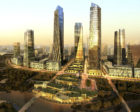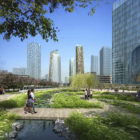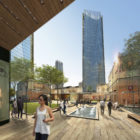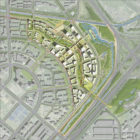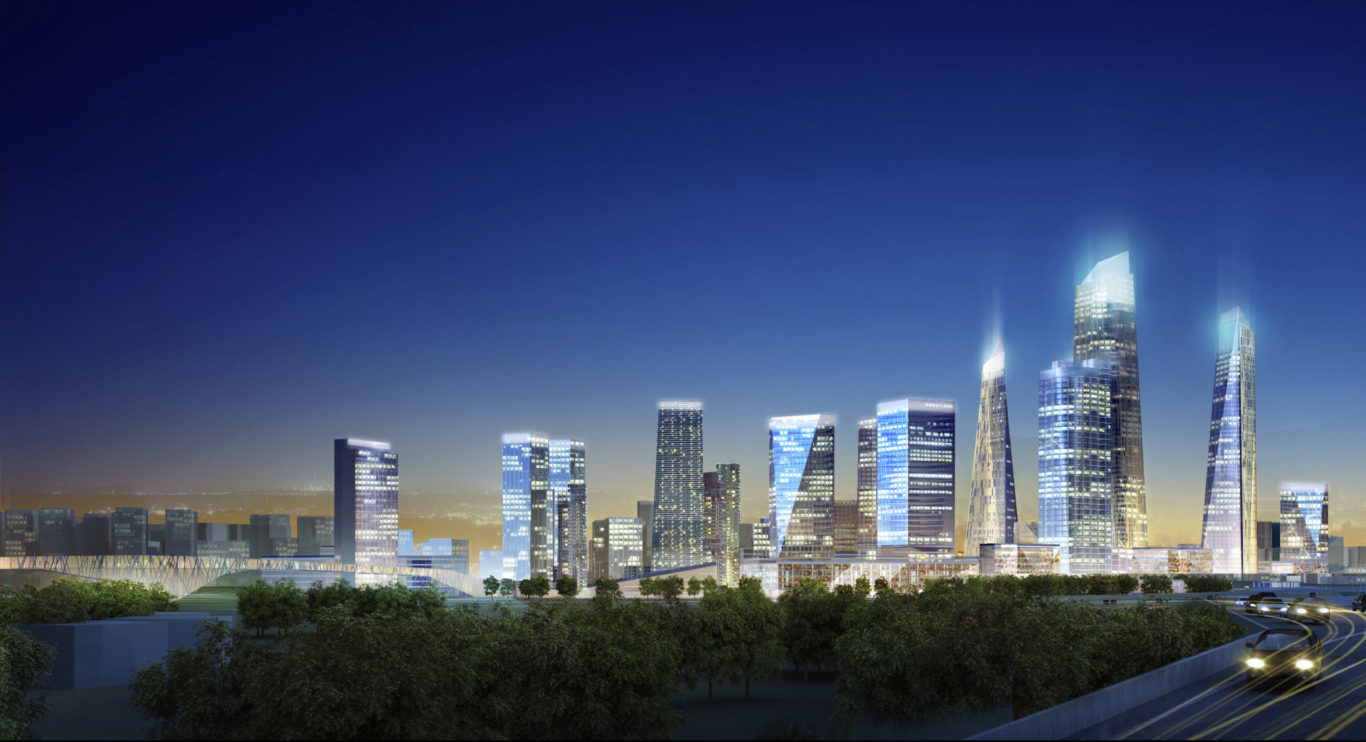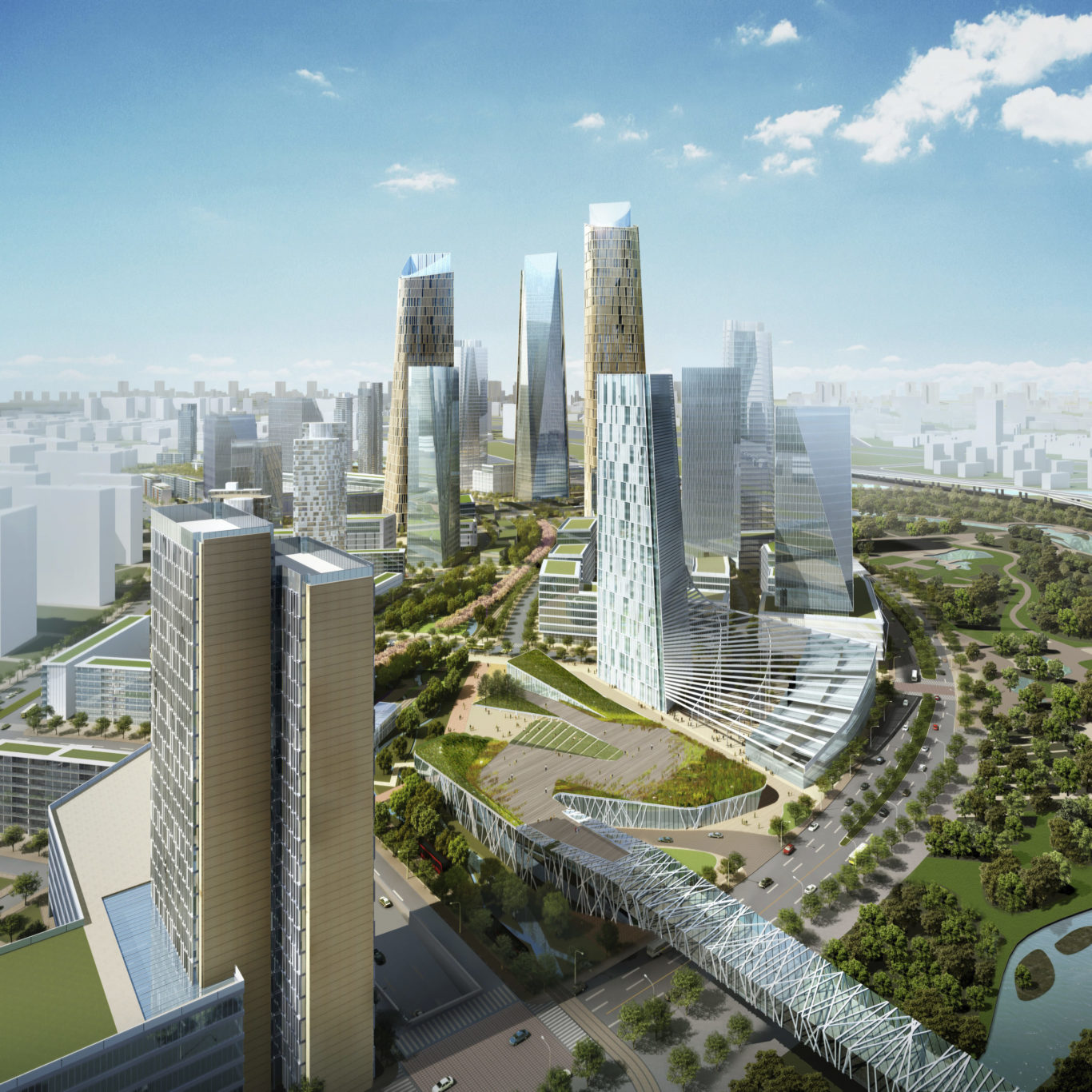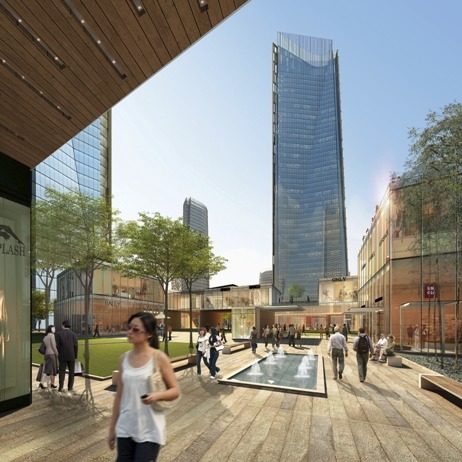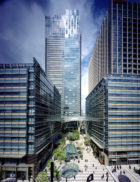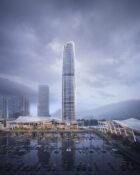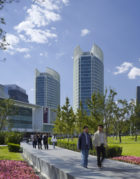Creating a new landmark district
Strategically positioned between central Beijing and the Capital International Airport, this proposed high-density, mixed-use district would become a new global gateway for China’s capital city. The plan, to be built in phases, calls for landmark offices and residential towers, cultural venues, and open space, and a new bridge linking to a vibrant arts community.
